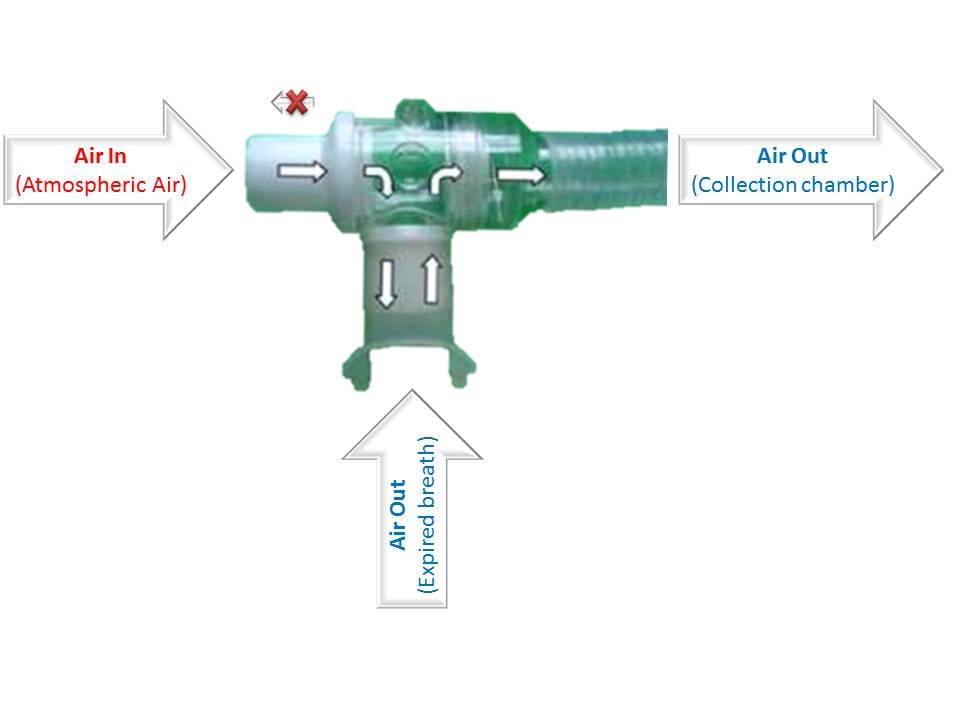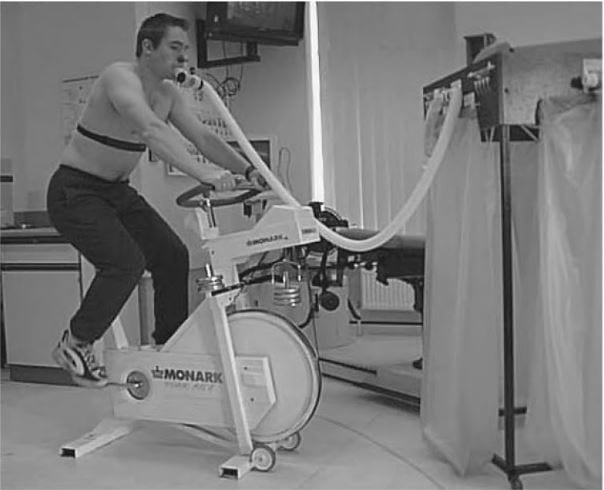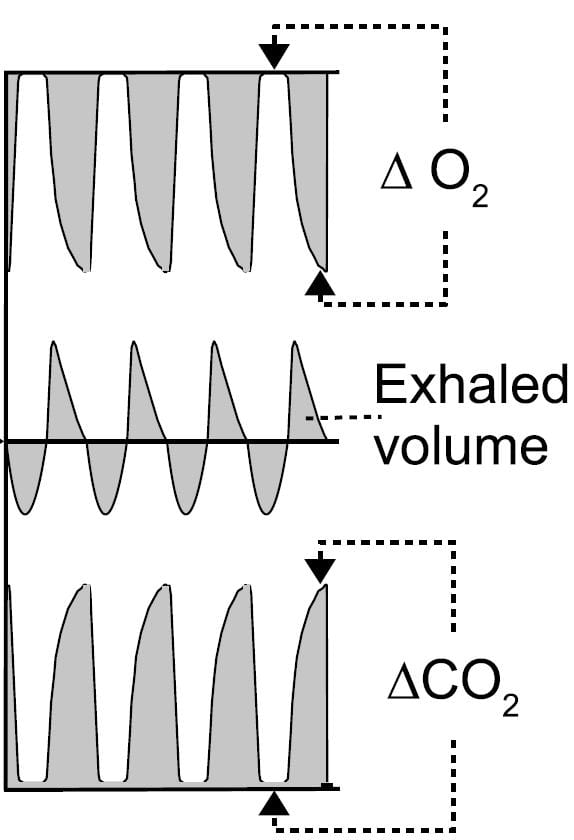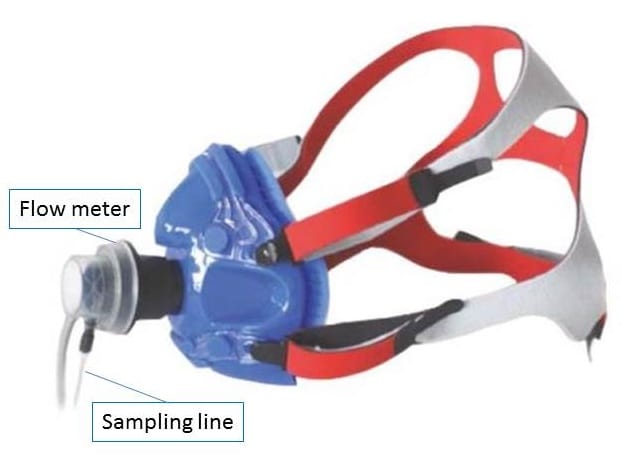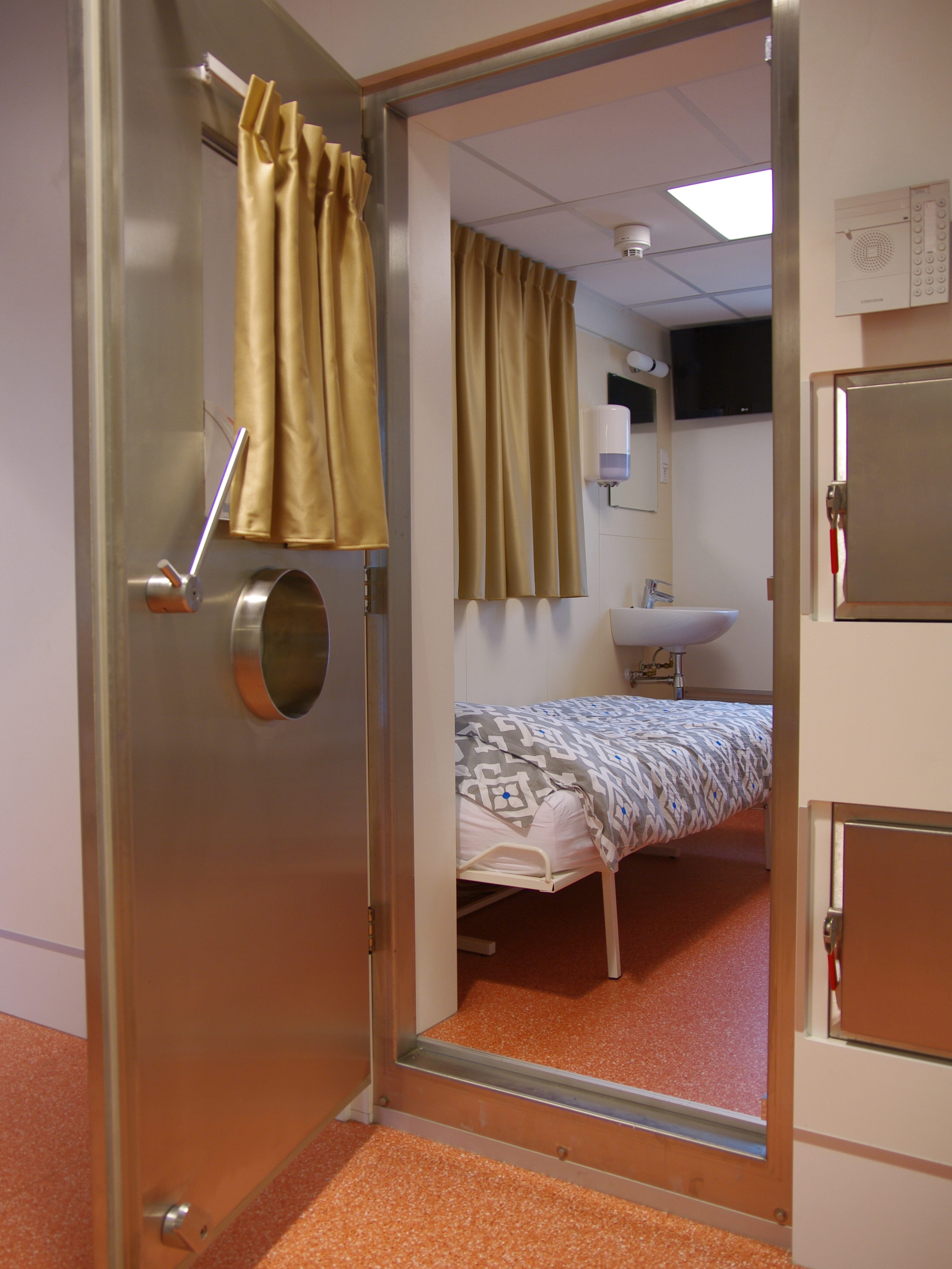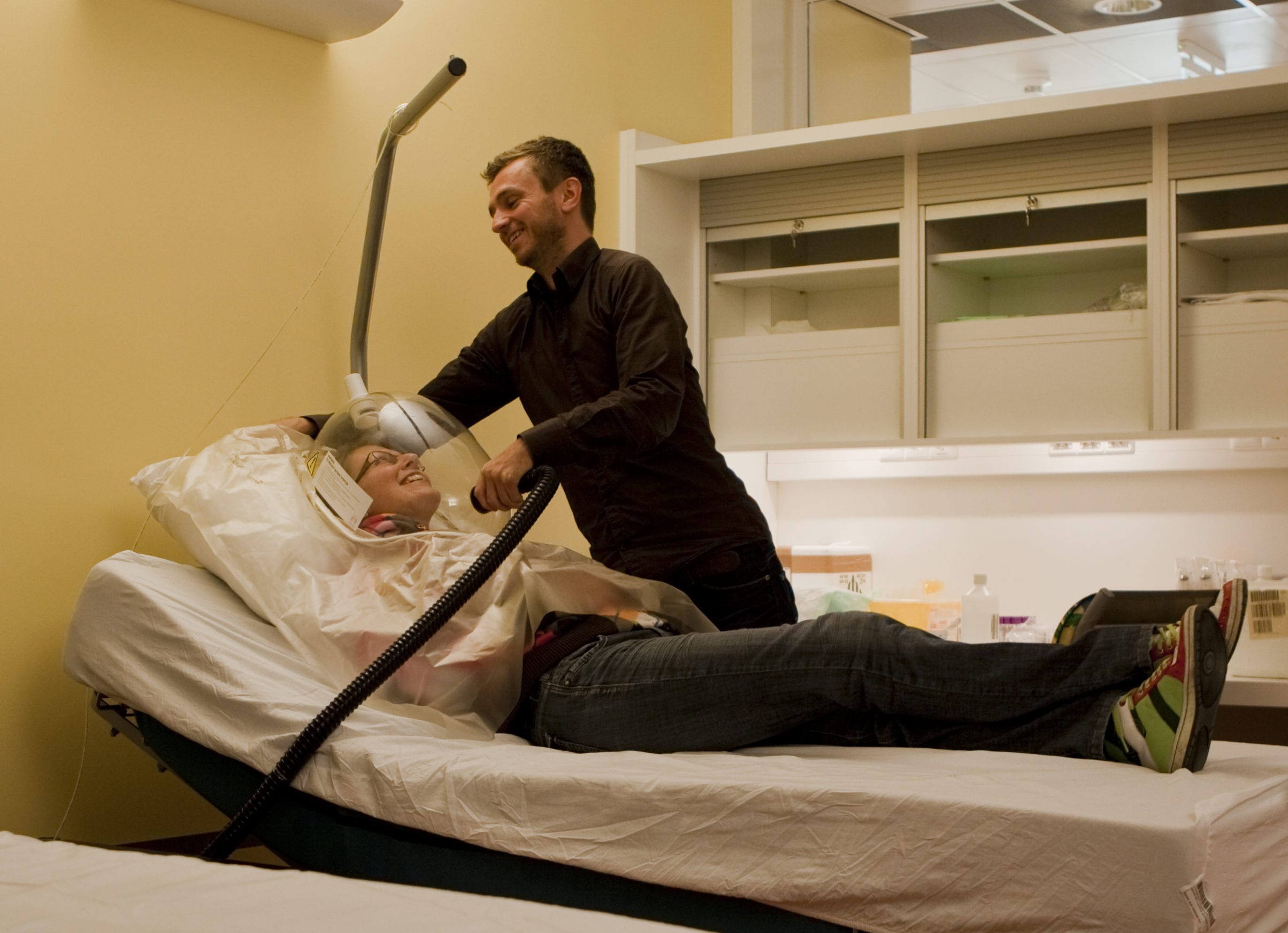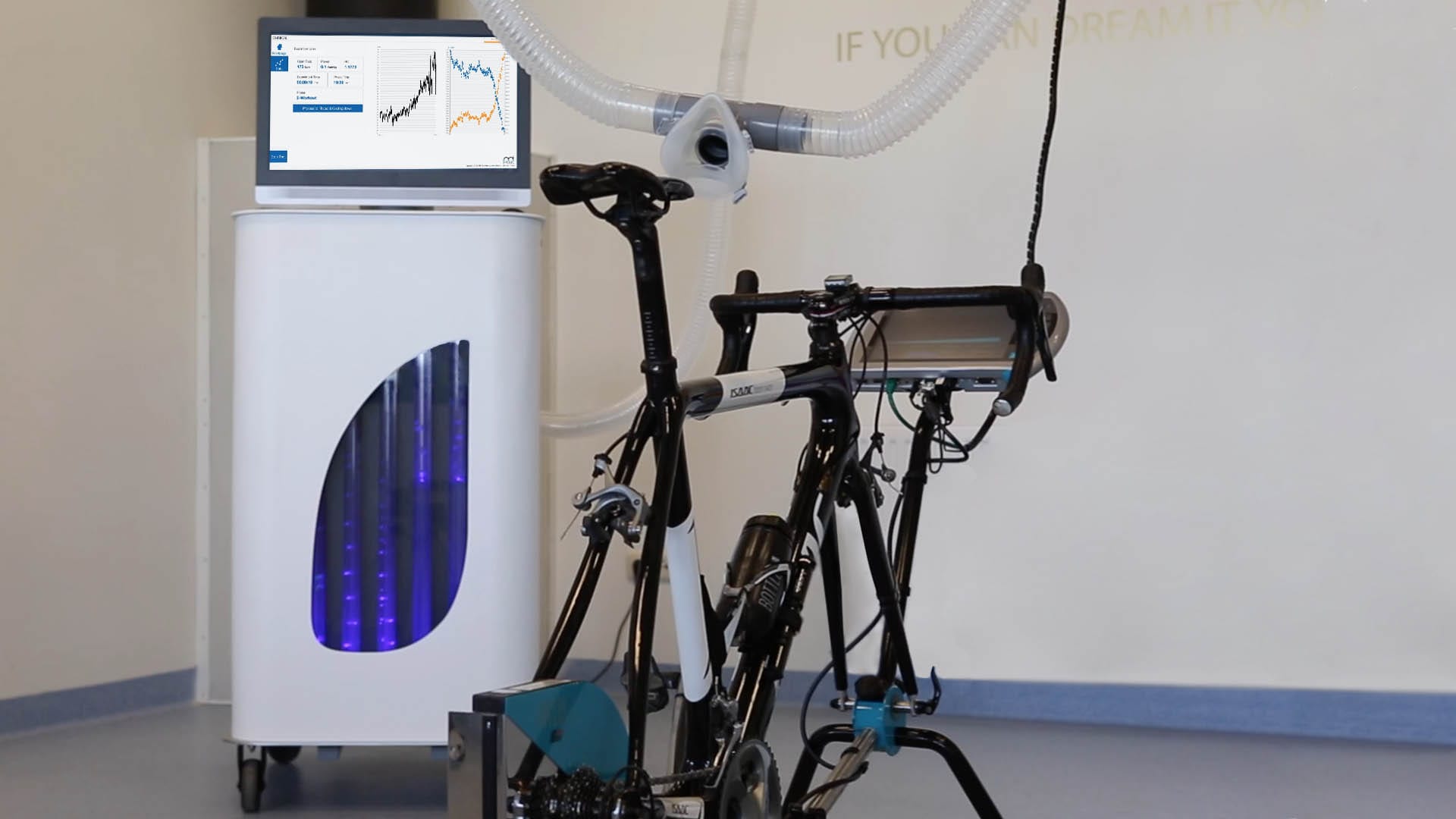Different indirect calorimetry systems are commercially available, differentiated by the way subjects are connected (e.g. hood, facemask), gas collection and analysis methods.
Generally, gas concentrations can be measured using one of three methods. With the exception of breath-by-breath systems, most indirect calorimeters measure over multiple breaths [2]:
- Mixing chamber (full capture of non-diluted exhaled breath)
- Breath-by-Breath (partial sample of non-diluted exhaled breath)
- Dilution method (full capture of diluted exhaled air e.g. Whole room indirect calorimeter, Omnical (Maastricht Instruments B.V.), ventilated hood)
Mixing chamber method (full capture, non-diluted)
Douglas bag
Principle
Indirect calorimetry by the Douglas bag was developed more than 100 years ago but it is perhaps the most established method (Douglas, 1911). With this method, one-way breathing valves (Figure 1) aggregate total undiluted exhalation in a Douglas bag over a timed period and is analysed (Figure 2)[1]. Often the Douglas bag method is used to validate automated indirect calorimetry systems.
Advantages:
- Generally considered the most accurate method to measure VO2max
- Total error of measurement in VO2max is approximately 1.5%
- Low cost
Limitations:
- Wear and tear of the bag or leakages contribute to sources of measurement error
- Rapid changes in ventilation and oxygen uptake cannot be measured
- Can only analyze at collected time points
- Technical expertise required
- Potential user error (e.g. from switching of valves, connection of tubes, emptying of bag)
- Time-consuming to setup
- Mouthpiece or ventilation valve adds artificial breathing resistance, increasing the required work for breathing [2]
Breath by breath method (partial capture, non-diluted)
Principle
The collection and analysis of gases in the breath-by-breath method are similar to those in the mixing chamber technique but each undiluted sample of expired breath is analysed (Figure 3). The concentrations of gases are continuously measured directly from samples drawn from the mouthpiece or ventilator valve (Figure 4). These samples are coupled with flow measurements for each breath to calculate oxygen uptake, carbon dioxide released and energy expenditure.
Advantages:
- Automated gas collection and analyses
- Greater versatility in gas sampling
- Generates discrete time series and measure variabilities in each breath
Limitations:
- Assumes that breathing and gas analysis is synchronised [2]
- Sampling rate and response time for carbon dioxide and oxygen analysers may not be quick enough at higher breathing frequencies [2]
- Less accurate oxygen and carbon dioxide analysis at higher ventilatory flow rate and higher breathing frequencies, e.g. during maximal exercise testing [4]
- Mouthpiece or ventilation valve adds artificial breathing resistance, increasing the required work for breathing [2]
- Short term analysis only
- More expensive
Diluted flow method (full capture, diluted)
Principle
In a diluted flow system, continuous air flow is directed through the chamber, hood or facemask (Figure 5) and the diluted exhaled breath is collected in a larger volume and measured over an aggregation interval. All air (drawn and exhaled) is analysed for oxygen and carbon dioxide concentrations, at the same time, flow is measured.
Advantages:
- Automated gas collection and analyses
- Absence of breathing valve or flowmeter, hence decreases or eliminates artificial breathing resistance which could impede subject performance
- Larger stream of air supply and greater user comfort without the use of nose clip
- Can be used in patients who cannot use a mouthpiece
Limitations:
- Measurement of a number of breaths over an aggregation interval in a small volume may have an uncertainty of ± 0.5 breaths [2]
- More expensive
Comments
Each method has its advantages and limitations. The suitability of the method and system will depend on the purpose of the intended study. Considerations should include the activity that is studied, the expected ventilatory flow rate and the effect of various applications (e.g. face mask, hood, or chamber) on breathing measurements. As the characteristics of each method and also of those commercially available may differ, it is advisable that the end user evaluates the system together with a specialised provider to find the optimal solution.
References
- Eston, R.G. and T. Reilly, Kinanthropometry and Exercise Physiology Laboratory Manual: Exercise physiology. 2009: Routledge.
- Schoffelen, P.F.M. and G. Plasqui, Classical experiments in whole-body metabolism: open-circuit respirometry-diluted flow chamber, hood, or facemask systems. Eur J Appl Physiol, 2018. 118(1): p. 33-49.
- Irwin, R.S., Procedures, techniques, and minimally invasive monitoring in intensive care medicine. 2008, Philadelphia: Wolters Kluwer Health/Lippincott Williams & Wilkins.
- Beijst, C., et al., Accuracy and precision of CPET equipment: a comparison of breath-by-breath and mixing chamber systems. J Med Eng Technol, 2013. 37(1): p. 35-42.
Maastricht Instruments BV offers various diluted flow indirect calorimetry systems for researchers and clinical professionals active within the field of metabolism and nutrition. The state-of-the-art technology is part of advanced metabolic research facilities in Europe and Asia, supporting ground breaking research on human metabolism and energy expenditure.

